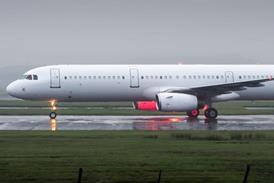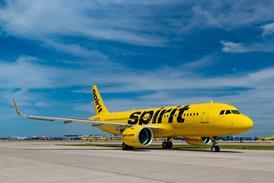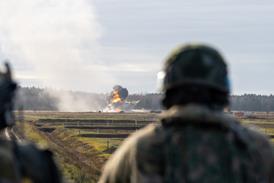GE and R-R to provide proposals based on derivatives of powerplants used for 787
Boeing has signed preliminary agreements with General Electric and Rolls-Royce on the use of 787 derivative engines for the proposed 747 Advanced as part of last-ditch efforts to launch the stretch version and give a lifeline to the 747 programme that faces a possible closure decision around mid-year.
The memoranda of understanding, agreed with both engine makers last week, cover the use of outline engine data in detailed presentations to airlines that Boeing has now begun following board approval to test the market (Flight International, 1-7 February). Key launch candidates are believed to include Cargolux and Cathay Pacific Airways, as well as China Airlines and Korean Air.
Boeing says it is "going out to airlines and asking 'will the Advanced meet your requirements?'", and is understood to have set a tight deadline for the 747 Advanced effort, giving itself just two months to select an engine and a further two to three months beyond that to detail the design for full offerability around May or June.
Speaking at a quarterly results conference, Boeing president and chief executive Harry Stonecipher confirmed that Boeing Commercial Airplanes had been authorised to evaluate the market. "It's a mid-year decision on whether we have another model of 747,"he said. "It is also the middle of the year when we'd have to start thinking about what the termination of the 747 will be, if we need to terminate it."
GE confirms that it has "signed a conditional MoU with Boeing". It is proposing a version of the GEnx modified to provide bleed air, and fitted with a smaller diameter fan than the 2.79m (110in) engine for the 787. R-R is understood to have signed a similar agreement regarding a Trent 1000-based derivative. The UK manufacturer declines to comment on any formal agreement, but acknowledges that it is "working closely with Boeing on a technological solution".
If Boeing gets sufficient business to launch the stretch this year, it will aim for entry-into-service in 2009. The passenger version, seating around 450 and with a range of up to 14,800km (8,000nm), will have a 2.03m-long plug insert in the double deck forward and a 1.53m plug close to the wing trailing edge. The freighter will be stretched in the same mid-to-aft fuselage position as the passenger model, but will incorporate a 3.56m stretch forward of the wing/body join.
GUY NORRIS / LOS ANGELES
Source: Flight International























